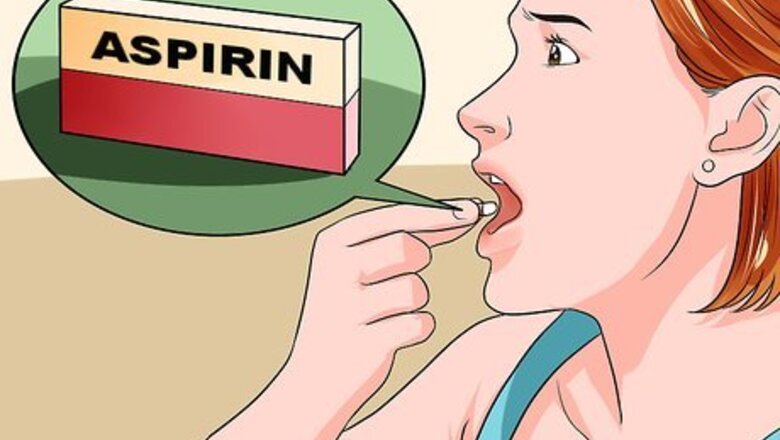
views
X
Research source
Though tension headaches are the most common type of headache, their causes aren’t well understood. Experts believe they may be triggered by responses to stress, depression, anxiety, or injury.[2]
X
Research source
With the right treatment, you should be able to find relief.[3]
X
Trustworthy Source
Mayo Clinic
Educational website from one of the world's leading hospitals
Go to source
Using Medication and Professional Treatment
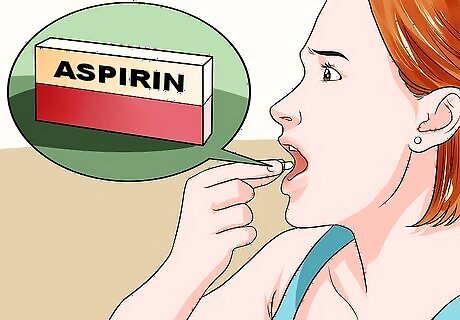
Take over the counter headache medication. These include acetaminophen (Tylenol), ibuprofen (Advil, Motrin) naproxen sodium (Aleve), and aspirin. Never take more than the amount recommended on the package, and use the lowest dose that relieves your headache. Trying OTC Medication CarefullyAvoid taking OTC medications too frequently. You shouldn’t take these medications for more than a few days a week. Overusing pain medications can make you reliant on them or cause rebound headaches.Be careful consuming caffeine with these medications. Combining caffeine and OTC headache medications, either in high doses or over a long period of time, can cause liver damage, especially if you use alcohol.Talk to your doctor if: you’re still having tension headaches after 7-10 days.
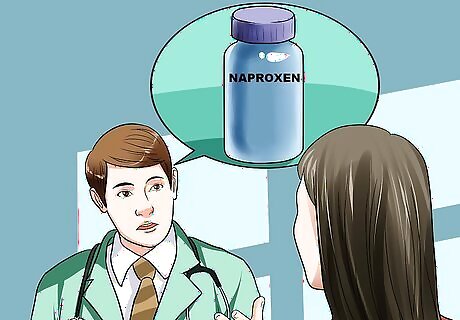
Ask your doctor about prescription medication. If your tension headaches do not go away with OTC drugs or lifestyle changes, your doctor may prescribe stronger medication. These include naproxen, indomethacin, and piroxicam. These prescription medications can cause side effects such as bleeding and upset stomach and raise your risk of heart problems. Your doctor should tell you about any side effects or complications before prescribing these to you. If you experience chronic tension headaches and migraines, your doctor may prescribe a triptan to relieve the pain. But opiates and narcotics are rarely prescribed because of their side effects and the risk of addiction or dependency.
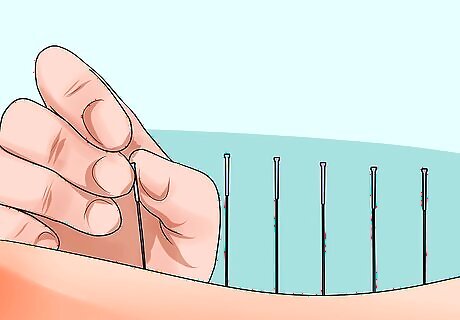
Try acupuncture. Acupuncture involves the insertion of fine needles into specific points in your body. The needles are then manually stimulated or stimulated electrically. This increases blood flow to the area around the needles and releases any tension or stress that could cause headaches.Why Try Acupuncture?It’s been proven to help tension headaches. Acupuncture shouldn’t cause you much pain or discomfort, and a 2012 study showed that it can help relieve both tension headaches and migraines.Always have acupuncture performed by an acupuncturist. Find a licensed acupuncturist by searching the online directory for the National Certification Commission for Acupuncture and Oriental Medicine (NCCAOM).You can also try dry-needling. Dry-needling isn’t based on traditional Chinese medicine like acupuncture is. It involves inserting acupuncture needles into trigger points to relieve tension and help muscles relax. It can be performed by trained healthcare professionals like doctors, physical therapists and massage therapists.
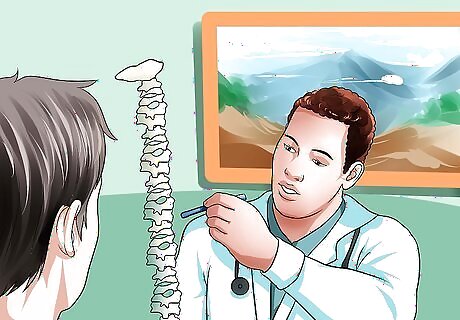
See a chiropractor. Studies suggest that spinal manipulation therapy performed by a licensed chiropractor may help treat tension headaches, especially if they are chronic. You can find a list of Chiropractic Licensing Boards in several countries at the Federation of Chiropractic Licensing Boards website. Always have treatments performed by a trained, licensed chiropractor.
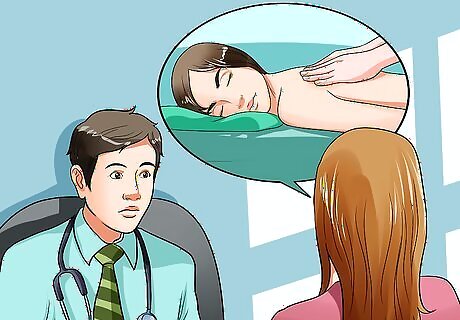
Ask your doctor about massage therapy. Medical massage therapy is a little different than massages given just for relaxation. Targeted massage therapy for the neck and shoulders has been shown to be effective at treating tension headaches and reducing their occurrence. Ask your doctor for a referral for medical massage. Health insurance companies may not cover massage. However, they are more likely to do so if you have a doctor's referral. Speak with your health insurance provider to determine whether this option is covered. You can find licensed and certified massage therapists with the directory search provided by the American Massage Therapy Association here.
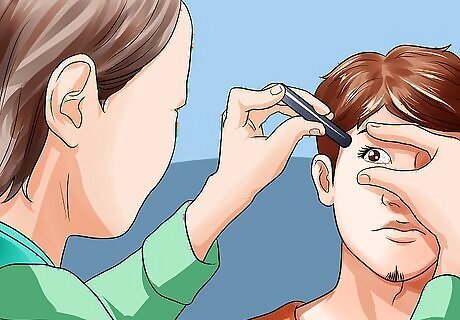
Have your eyes examined. Eye strain is a common tension headache trigger. If you have frequent headaches (two or more per week), schedule an eye examination. Difficulty with your vision could be contributing to your headaches. If you wear glasses or contacts, consider contacting your eye doctor for a new exam. Your vision can change, and if your prescription is no longer what you need you could be straining your eyes.
Using Home Remedies
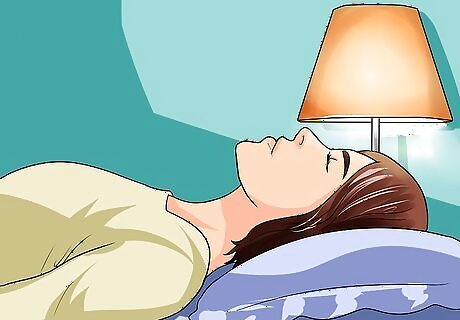
Rest in a dark, quiet room. Stress is one of the main causes of headaches. And once you have a tension headache, you may be sensitive to light or sound. To counteract this, sit or lie down in a dimly lit room. Close your eyes and try to relax your back, neck, and shoulders.Getting Rest and RelaxationTurn off sources of noise and light. Shut off your computer, TV, and cellphone so you won’t be disturbed. Shut your blinds and turn off the lights to focus on breathing and relaxing.If you can’t lie down: Close your eyes and cup them with the palm of your hands. Apply light pressure for 2 minutes to shut down your optic nerves and help you relax.Try a basic neck exercise. Place your palm on your forehead. Use your neck muscles to lightly press your forehead against your hand while keep your head upright.
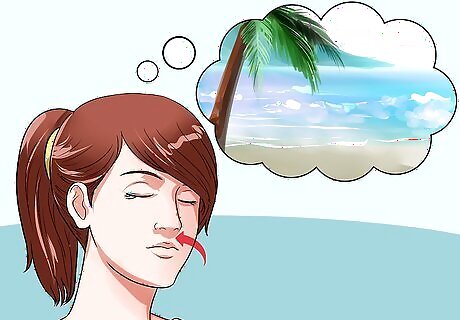
Do a deep breathing exercise. Deep breathing can help you relax and reduce any stress in your body, including your head. Take slow, even breaths and try to relax.Deep Breathing StepsClose your eyes and take a deep breath.Exhale slowly. Relax any areas in your body that feel tight. Visualize a place or thing that makes you feel calm, like a beach, a sunny garden, or a country road.Drop your chin to your chest. Slowly rotate your head in a half circle from side to side.Continue breathing and relaxing slowly. Exhale slowly and keep picturing the calming scene in your head.
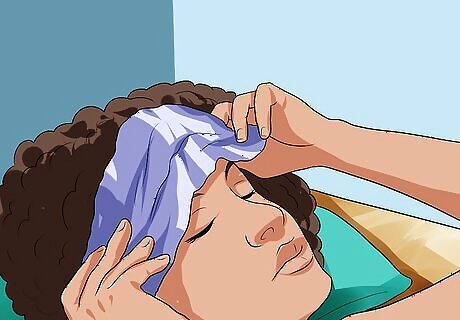
Apply a hot or cold compress to your head. Heat and cold can help to relieve pain and muscle tension in your neck and head. Apply a moist hot towel or warm compress to the back of your neck or on your forehead. You can also take a long, hot shower, being sure to run water down your head and on the back of your neck. Wrap an ice pack in a towel and place it on the back of your neck or on your forehead.
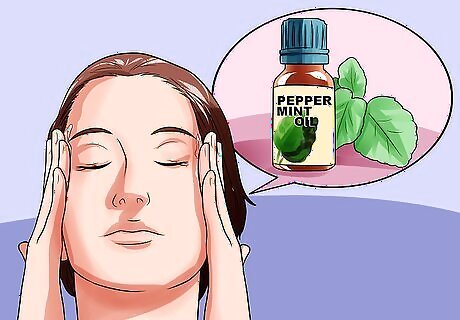
Apply peppermint oil to your temples, your forehead and the back of your jaw. Peppermint can have a nice soothing effect and ease any discomfort or pain. Once you massage in a few drops of oil, you should feel a cooling sensation on area. Breathe deeply and find a quiet place to sit or lie down. If you have sensitive skin, dilute peppermint oil with a drop or two of olive oil or water before applying it.
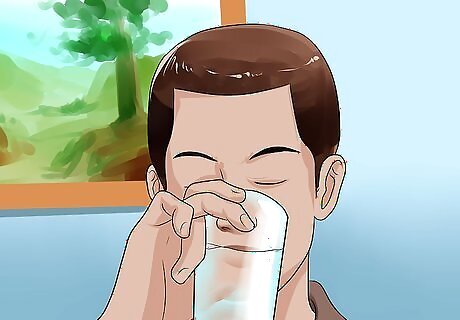
Hydrate with water or herbal tea. As soon as you feel tension in your head, drink several glasses of water. Or make yourself some herbal tea to put yourself in a relaxed state of mind. Dehydration may trigger headaches. Avoid consuming caffeine or alcohol, as these will only dehydrate you more.
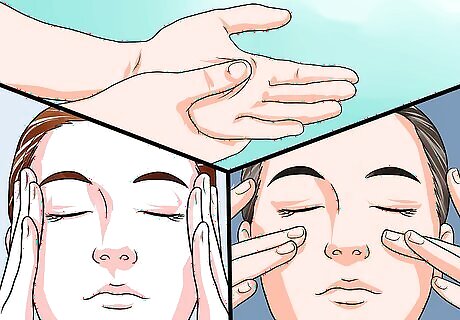
Massage your face, head, and hands. Do a targeted mini-massage on your upper body. Use your fingertips to rub the back and sides of your head. Then, gently massage the areas under your eyes. Move your scalp gently back and forth using your fingertips. Don't move it more than a half-inch or so. You can also run your fingertips along the inside of each of your fingers and rub your palms.
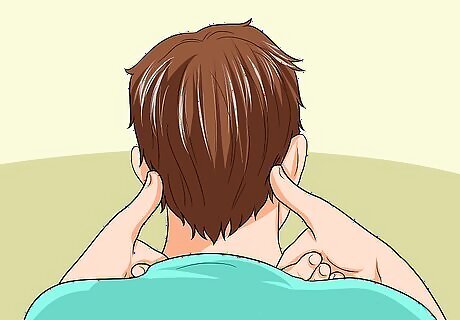
Try an acupressure massage to ease headache pain. This is a simple acupressure technique you can do on yourself at home.Doing a Gentle Acupressure MassagePlace your thumbs near the base of your skull.Find the slight depressions on both sides. This is right where your head meets your neck, just outside of the muscle in the center of your head. The depressions should be about 2 inches (5.1 cm) from the middle of your head.Press with your thumbs. Press down gently inwards and upwards so that you can feel a slight sensation.Move your thumbs in small circles for 1-2 minutes. Continue pressing lightly and massaging to relieve tension.
Adjusting Your Lifestyle
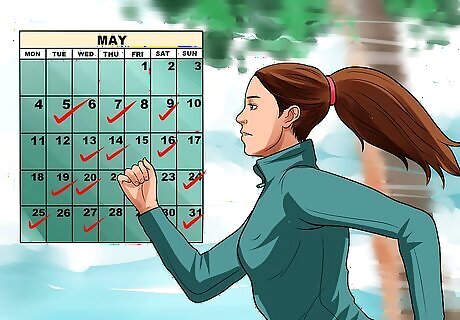
Exercise regularly. Physical activity can help to release any stress or tension in your body and produces endorphins in your brain, which fight off pain in your body. Do 30 minutes of walking, biking, or running at least three times a week. Be consistent with your exercise routine.
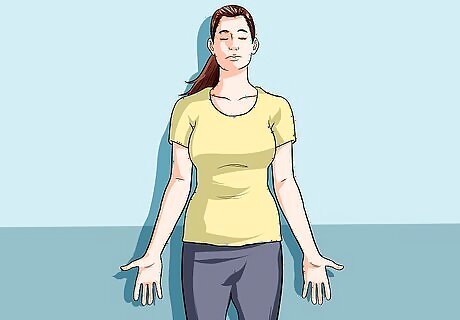
Stand in Mountain Pose to improve your posture. Having good posture can help keep your muscles from tensing up. It can also release tension in your head. Doing yoga poses like Mountain Pose will improve your posture and relax you. Stand with your feet hip-width apart. Roll your shoulders back and place your hands at your sides. Pull in your abdomen and tuck your tailbone toward the floor. Tuck your chin towards your chest. Try to hold this pose for at least 5-10 breaths.
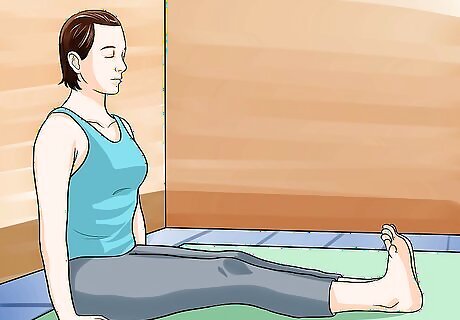
Sit in Stick Pose. This is another good yoga pose to improve your posture and practice deep breathing. Sit with your legs straight out in front of you. Flex your toes so they move towards you. Roll your shoulders back and place your hands at your sides on the floor. Pull in your abdomen and tuck your tailbone towards the floor. Tuck your chin towards your chest. Try to hold this pose for at least 5-10 breaths. You can also cross your legs if straight legs is uncomfortable for you.
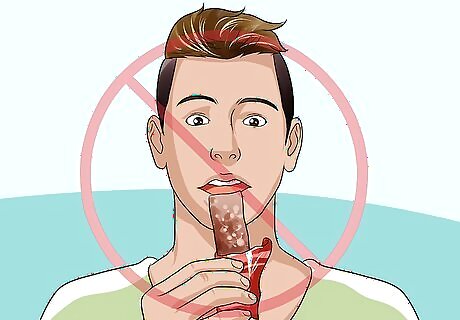
Avoid food that contains MSG and caffeine. MSG or monosodium glutamate is a flavor enhancer commonly found in Chinese food. Some people react to MSG by developing a headache. But there is no scientific link between MSG and headaches. Other foods that may cause headaches include:Foods that May Cause HeadachesChocolateCheeseFoods containing the amino acid tyramine, found in red wine, aged cheese, smoked fish, chicken livers, figs, and some beansNutsPeanut butterSome fruits, like avocado, banana, and citrusOnionsDairy productsMeats containing nitrates, such as bacon, hot dogs, salami, cured meatsFermented or pickled foodsTip: Try going about a week at a time without one of these foods to see how your body responds.
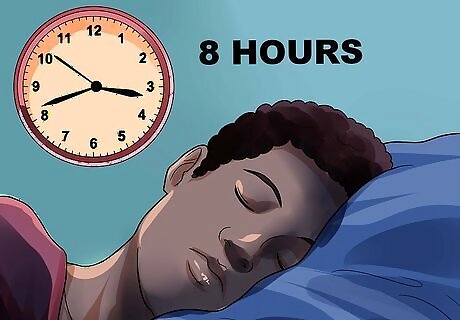
Get at least 8 hours of sleep a night. A consistent sleep schedule will ensure your brain and body are free of anxiety and stress, two big causes of tension headaches.
Preventing Tension Headaches
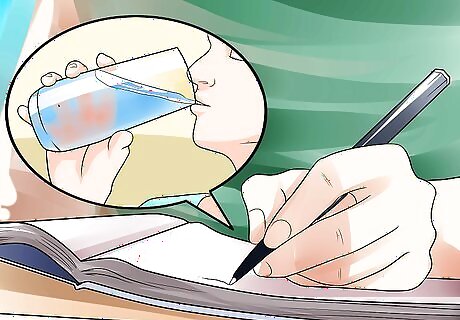
Keep a headache diary. This can help you to identify the source of your headaches and how you can adjust your environment and habits to avoid them.Tracking Your HeadachesFirst, write the date and time you noticed the headache start to come on.After the headache, jot down answers to these questions:What did you eat or drink that day?How much sleep did you get the night before?What were you doing just before the headache?How long did it last?Did any methods work to make it stop?
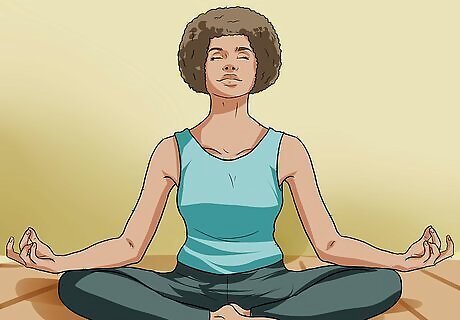
Practice relaxation and stress management techniques daily. This could be a morning yoga class, a 15 to 20 minute meditation or a deep breathing practice before you go to bed. Exercise at least three times a week to keep your anxiety and stress at bay.
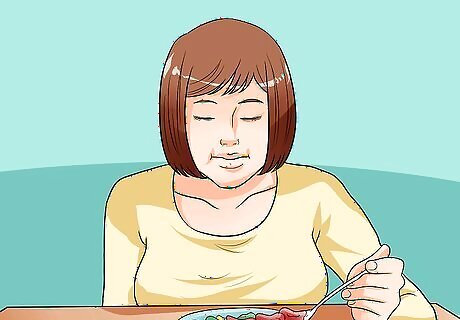
Maintain a healthy lifestyle. Avoid caffeine, alcohol, and smoking. Get 8 hours of sleep a night and take care of yourself by avoiding stress at home and at work. Eat balanced meals that do not contain MSG or other headache-inducing foods. Drink lots of water every day and stay hydrated.
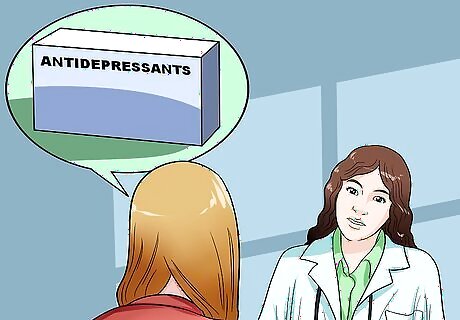
Talk to your doctor about preventative medications if you have chronic tension headaches. Your doctor will examine you to make sure your headaches are not actually migraines or something more serious. If your headaches continue despite other pain medication and therapies, your doctor may prescribe preventative medication. These include: Tricyclic antidepressants. These are the most commonly used medications to prevent tension headaches. Side effects of these medications include weight gain, drowsiness, and dry mouth. Anticonvulsants and muscle relaxants, such as topiramate. However, more study is needed to determine the effectiveness of anticonvulsants and relaxants for tension headaches. Keep in mind preventive medication can take several weeks or more to build up in your system before they take effect. So be patient and continue taking the prescribed dosage, even if you do not see improvements as soon as you begin taking the medication. Your doctor will monitor your treatment to see how effective the preventive medication is for you.




















Comments
0 comment